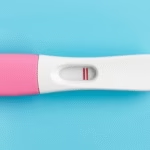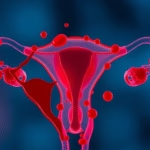Understanding Implantation and Ovulation Bleeding
In this article, we will be talking about implantation or ovulation bleeding. These two terms are often confused, yet they play distinct roles in a woman’s reproductive health. Ovulation bleeding occurs when an ovary releases an egg, and this process may cause mild spotting in some women, occurring typically around the middle of the menstrual cycle. Implantation bleeding, on the other hand, refers to slight bleeding that may occur when a fertilized egg attaches itself to the lining of the uterus, which usually happens about six to twelve days after conception.
Understanding the differences between these two types of bleeding is crucial for women who are trying to conceive. Not only can they indicate different phases of the reproductive cycle, but being aware of their signs can provide insight into one’s fertility. In the following sections, we will explore aspects of both implantation and ovulation bleeding, helping you recognize their symptoms and implications for your reproductive health.
What Causes Ovulation Bleeding?
Ovulation bleeding is primarily caused by hormonal fluctuations within the menstrual cycle. When a woman’s estrogen levels rise in mid-cycle, this sudden change can lead to light spotting. The release of the egg also creates a brief shift in the uterine lining, which might result in discharge of blood. For most women, ovulation bleeding is mild and lasts only a day or two, often mistaken for the start of periods.
If you’re experiencing this form of light bleeding, it typically occurs around day 14 of a 28-day cycle. For those with irregular cycles, timing may differ. Recognizing ovulation bleeding is essential for women tracking ovulation for family planning or fertility reasons. Key characteristics of ovulation bleeding include:
Being aware of these signs can assist in identifying your most fertile days. If the bleeding is accompanied by severe pain or unusually heavy bleeding, consulting a healthcare professional is advised.
Recognizing Implantation Bleeding
Implantation bleeding is a key indicator that conception has taken place. It occurs when a fertilized egg embeds itself into the uterine lining. Typically, this can happen about a week after conception, and it may last for a few hours to a few days. Unlike ovulation bleeding, which usually occurs mid-cycle, implantation bleeding typically happens just before your expected period. Here’s what to look for:
Many women may also experience early pregnancy symptoms along with implantation bleeding, including breast tenderness and fatigue. Understanding these signs can be essential for early pregnancy detection. If you suspect pregnancy and experience unexplained bleeding, consulting a healthcare provider is always a good step.
How to Differentiate Between Implantation and Ovulation Bleeding
One of the common queries among women trying to conceive is how to differentiate between implantation and ovulation bleeding. Both can present similar signs of spotting, but timing and flow help identify them. Ovulation bleeding occurs mid-cycle, usually around day 14, while implantation bleeding generally appears a week later, shortly before a missed period.
In terms of flow, ovulation bleeding may consist of a few hours of light spotting, typically darker in color, while implantation bleeding is much lighter and can last from a few hours to days. Listening to your body and tracking menstrual cycles can help you better identify the signs. Keeping a consistent record of symptoms, flow, and timing can provide better insights into your cycle and optimize your chances of conception.
Common Misconceptions About Implantation and Ovulation Bleeding
Despite advancements in reproductive health education, several myths persist about implantation and ovulation bleeding. One frequent misconception is that all women experience such bleeding. In reality, not all women will notice spotting during ovulation or implantation. Understanding this variability is important for maintaining realistic expectations about the conception process.
Another myth is that anyone who experiences bleeding, particularly outside their usual menstrual cycle, must be pregnant. While it can be a sign, various factors, such as hormonal imbalances or uterine abnormalities, could cause similar symptoms. Hence, any unexplained or concerning bleeding should warrant a visit to a healthcare provider for accurate diagnosis.
Understanding the differences, common misconceptions, and normal ranges of symptoms will empower women on their reproductive health journeys—allowing them to make informed decisions for their well-being.
The Role of Hormones in Implantation and Ovulation Bleeding
The hormonal regulations in a woman’s body play a crucial role in both implantation and ovulation bleeding. In the mid-cycle stage, estrogen levels peak, triggering ovulation. The fluctuating levels of estrogen can lead to the onset of ovulation bleeding. Alternatively, after ovulation, progesterone rises to prepare the uterine lining for potential implantation. If fertilization occurs, the fertilized egg travels to the uterus and seeks to implant, often accompanied by another surge in hormones which may lead to slight spotting.
Hormones like hCG (human chorionic gonadotropin) also begin to rise once implantation is successful, indicating pregnancy. Recognizing the relationship between these hormones and respective bleeding experiences is key for understanding one’s body better and observing potential signs of pregnancy more efficiently.
A well-balanced hormonal cycle is vital for reproduction. Any imbalances can alter bleeding patterns and affect overall fertility. If you experience inconsistent cycles or abnormal bleeding, speaking with a healthcare professional will better direct your understanding and treatment options.
When to Seek Medical Attention
Understanding when to seek medical attention regarding implantation or ovulation bleeding is crucial. In most cases, light spotting associated with these events is normal. However, it is essential to be aware of your body and any changes that might indicate complications.
Consider seeking medical advice if:
These could potentially indicate underlying conditions like ectopic pregnancies or other reproductive issues. Open communication with a healthcare provider and regular health check-ups are vital for maintaining reproductive health.
Final Thoughts
Overall, understanding implantation and ovulation bleeding is integral for women aiming to conceive. Recognizing these signs can guide fertility planning and enhance awareness of one’s reproductive health. Ovulation bleeding typically occurs midway through the menstrual cycle due to hormonal shifts, while implantation bleeding may signal a confirmed pregnancy, generally appearing a week or so after ovulation.
Tracking cycles, recognizing symptoms, and distinguishing between these two types of bleeding will empower women to navigate their fertility journeys more effectively. This knowledge not only reduces uncertainty but can also foster proactive discussions with healthcare providers. Always remember that individual experiences can vary, making it essential to consult a medical professional for personalized advice.
By educating ourselves about the reproductive cycle, including factors influencing bleeding, women can gain confidence in their reproductive health and make informed choices related to parenting or family planning.
Frequently Asked Questions
1. Is spotting during ovulation a sign of fertility?
Yes, light spotting during ovulation can indicate that you are in your fertile phase, enhancing your chances of conception.
2. How long does implantation bleeding last?
Implantation bleeding usually lasts a few hours to a few days, much shorter than a typical menstrual period.
3. Can I still be pregnant if I have implantation bleeding?
Yes, many women experience implantation bleeding and go on to have successful pregnancies.
4. What should I do if I have abnormal bleeding?
If you experience abnormal or heavy bleeding, it is advisable to consult a healthcare provider for a thorough examination.
5. Can lifestyle changes affect ovulation and implantation bleeding?
Absolutely. Factors like stress, diet, and overall health can influence hormonal balances, potentially affecting ovulation and bleeding patterns.
Further Reading
What Type of Psychotherapy Is Best for Anxiety?







